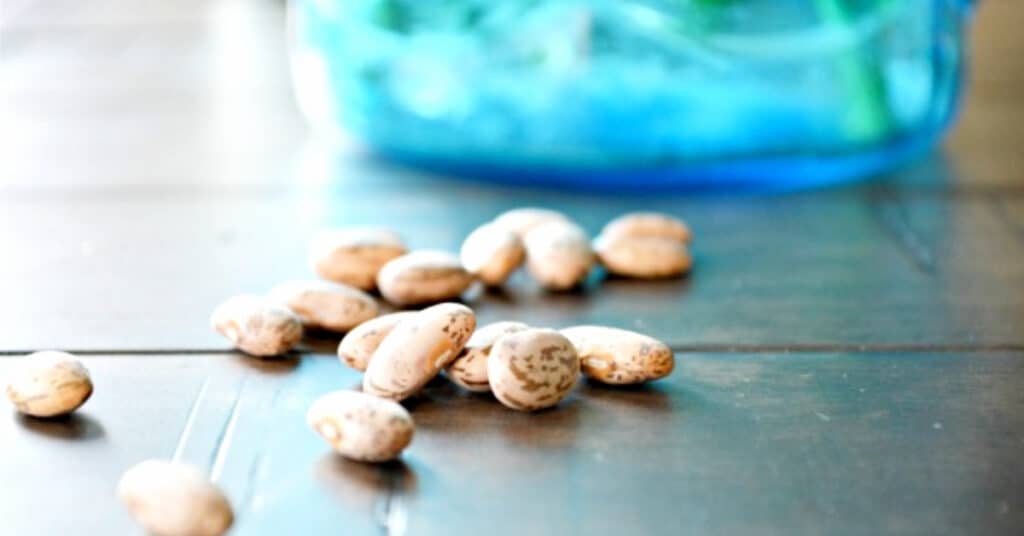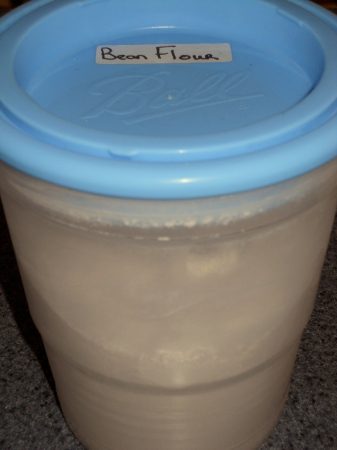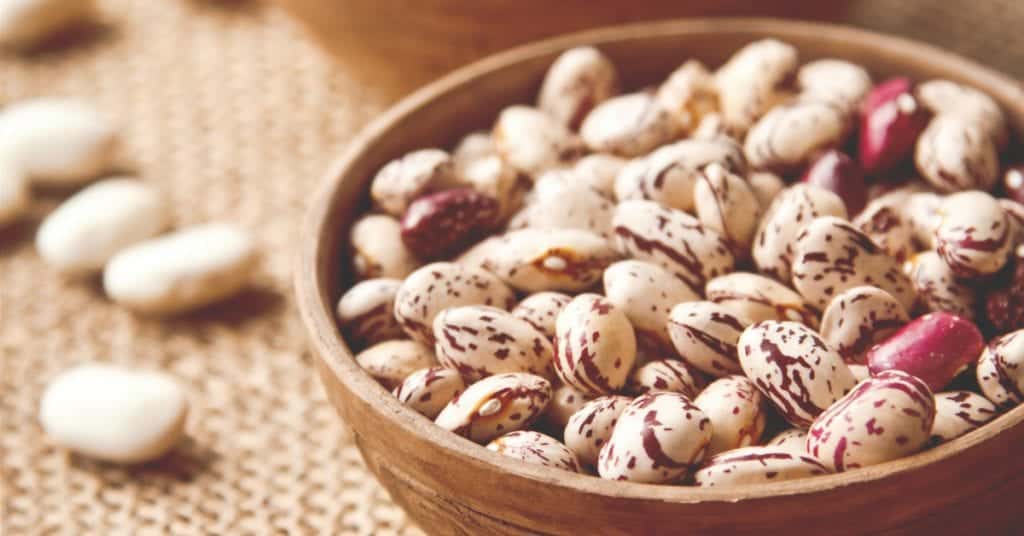Bean Flour is a wonderful gluten-free alternative to flour or starch when used in a recipe. It’s healthy, full of fiber, and can easily be made when needed.
Bean flour is growing in popularity as a gluten-free, high-protein alternative to traditional wheat flour But some people have concerns about whether consuming bean flour could be harmful or toxic. In this article, we’ll take an in-depth look at the safety and risks of eating bean flour
An Overview of Bean Flour
Bean flour is made by grinding dried beans into a fine powder There are many different types of bean flour, including chickpea flour, black bean flour, navy bean flour, and more Compared to wheat flour, bean flours are higher in protein, fiber, and certain vitamins and minerals like iron. They are naturally gluten-free as well.
Bean flours work well in place of traditional flours in recipes like breads, muffins, pancakes, and cookies They add extra nutrition while providing structure to baked goods. Bean flours also give a rich, earthy flavor to dishes. They can be used to thicken soups and stews too.
Potential Concerns About Raw Bean Flour
One concern with raw bean flour is that it contains lectins. Lectins are proteins that are found in many plants, especially beans and grains. Eating large amounts of raw lectins can cause nausea, vomiting, and other digestive distress.
However, cooking destroys lectins. According to experts, simply boiling bean flour for 10 minutes eliminates virtually all lectins and makes the flour safe to eat. Baking, steaming, or otherwise thoroughly cooking bean flour removes lectins as well.
Just as with traditional wheat flour, eating bean flour raw is not advised. This is due to the high amount of phytic acid in uncooked beans, according to WebMD. Phytic acid can block mineral absorption. Cooking helps break down phytic acid.
So while raw bean flour may be toxic due to lectins and phytic acid, cooked bean flour does not pose these risks. As long as you properly cook bean flour before eating, it is safe.
Allergy Considerations with Bean Flour
Another thing to be aware of is that bean flour can cause allergic reactions in some people. Beans and legumes are common food allergens. Symptoms of an allergic reaction can range from mild itching and hives to severe anaphylaxis.
If you have a known allergy to beans or legumes, avoid using bean flour. Introduce bean flour cautiously to watch for any signs of an adverse reaction. Just as with whole beans, it’s possible to be allergic to bean flours.
For most people though, bean flour allergies are not a concern as long as you don’t have an existing bean allergy. Speak to your doctor if you have food allergies and want to try bean flour.
Health Benefits of Bean Flour
When properly prepared, bean flour offers some great health benefits:
-
High in Protein – Bean flours contain significantly more protein than wheat flour, ranging from about 20-25% protein content. This makes them excellent for boosting protein intake.
-
Rich in Fiber – With around 5-10% fiber content, bean flours are an easy way to increase fiber consumption. Fiber promotes healthy digestion and heart health.
-
Gluten-Free – All bean flours are naturally gluten-free, making them a perfect pick for anyone avoiding gluten.
-
Provides Iron – Bean flour delivers a hefty dose of iron, an important mineral that helps transport oxygen in the blood. Iron deficiency is common, so bean flour is a smart iron source.
-
Contains Other Nutrients – In addition to protein, fiber and iron, bean flours supply B vitamins, magnesium, potassium, and more. They pack a nutritional punch.
Types of Bean Flour
There are numerous varieties of bean flour to try:
-
Black Bean Flour – Made from black beans, this flour has an earthy, robust flavor. It works well in brownies, bread, and tacos.
-
Chickpea Flour – With its natural sweetness, chickpea flour is popular for baking sweets and bread. It can also be used as a base for vegan egg substitutes.
-
Navy Bean Flour – Subtly sweet navy bean flour lends moisture to baked goods. It’s a great choice for cakes, cookies and more.
-
Pinto Bean Flour – Offering a mildly nutty taste, pinto bean flour excels at making tender baked goods that hold together well.
-
Fava Bean Flour – Fava bean flour has a distinctive flavor that enhances the taste of recipes. Use it in pancakes, flatbreads, crackers and more.
-
Green Lentil Flour – Made from dried lentils, green lentil flour gives great structure to yeast breads and has an earthy flavor.
No matter which bean flour type you choose, properly cooking it eliminates any potential lectin or phytic acid concerns. Try several kinds to see which bean flour becomes your new favorite!
Tips for Safely Using Bean Flour
To safely incorporate bean flour into your cooking, keep these tips in mind:
-
Always thoroughly cook bean flour before eating by boiling, baking, or otherwise heating it. Never consume raw bean flour.
-
Start by swapping just 1/4 to 1/3 of the wheat flour for bean flour in recipes. Replacing all wheat flour may impact texture.
-
Consider combining bean flour with other gluten-free flours like tapioca and rice flour to improve binding and moisture.
-
Store bean flour in an airtight container in a cool, dry place away from heat and sunlight. It will keep for up to one year.
-
When first using bean flour, introduce it slowly and watch for any allergic reactions if you have food allergies.
-
Drink plenty of water when eating dishes made with bean flour to aid digestion of the extra fiber.
Delicious Ways to Enjoy Bean Flour
From breakfasts to dinners to sweet treats, bean flours liven up all kinds of recipes:
-
Swap in chickpea flour for half of the wheat flour when making pancakes or waffles. It adds a boost of protein to start the day right.
-
For a fiber-filled breakfast, make muffins with black bean flour. The beans give great texture and flavor.
-
Add a scoop of navy bean flour to Meatless Monday lasagna to infuse extra nutrition into this vegetarian dinner.
-
Whip up gluten-free peanut butter cookies using pinto bean flour. They will be chewy, tasty and peanut-buttery.
-
Combine lentil flour and cumin to coat chicken before baking for a Middle Eastern inspired entrée.
-
Make vegan carrot cake more nutrient dense by using fava bean flour in the cake and frosting.
With so many ways to incorporate bean flour into recipes, it can quickly become a kitchen staple. Give your baked goods and dishes a nutrition upgrade with bean flour!
The Bottom Line on Bean Flour Safety
The solution is simple – thoroughly cook any bean flour before eating it. Properly prepared bean flour is a nutritious and gluten-free alternative to traditional wheat flour that can be used in both savory and sweet recipes. Just take care to introduce bean flour slowly if you have food allergies.
So don’t fear bean flour – with proper handling, bean flour is not toxic and can be safely enjoyed as part of a healthy diet! Cook it, bake it, and incorporate bean flour into your favorite recipes.

Cream Soup Using Bean Flour
- 2 cups stock (beef, chicken, or vegetable stock can be used)
- 1/3 cup white bean flour
Place stock in a saucepan and add in bean flour, mixing with a whisk. Simmer on low until thickened. Makes the equivalent of 2 cans of cream soup. In any recipe that calls for “cream of” soup, this flour can be used right away or cooled down and put in the fridge.
- This will taste like Cream of Chicken Soup if you use chicken stock.
- Add small pieces of mushrooms to beef stock and use it to make cream of mushroom soup.
- You can use chicken or vegetable stock and diced celery for any other cream soup, like Cream of Celery.
It is very versatile and can be switched up according to your tastes and need.

Just recently I have also discovered using the dried pinto bean, also. These can be also ground into flour and used as instant refried beans. I found this recipe in the Country Beans cookbook. You can use the beans in a one-to-one ratio, but this will produce a thicker consistency. I use this recipe:
- 1 cup water
- 3/4 cup pinto bean flour
Bring water to a boil and whisk in bean flour. Cover and cook 5 minutes, stirring.
This recipe can be used in place of your “canned refried beans” that you buy in the store. Taco dips (with taco seasoning) or any recipe that calls for refried beans can be made with it.
I have also used the pinto bean flour in making a taco dip. I used the recipe above and then I added in taco seasoning to taste. Spread the cooled bean/spice mixture onto a large platter. Add a layer of sour cream and a layer of salsa. Shred up lettuce and cheese to add on top. Serve with tortilla chips.
You can do the same thing with black beans to make a tasty black bean dip or “refried black beans.”

Making and Using Bean Flour
Bean flour can be obtained in many different ways. You can find it at a natural food store, order it from Amazon, order it from Azure Standard, or you can even mill your own.
If you already have a grain mill, milling your own is by far the cheapest way to do it.
This is what I use: the mill attachment that comes with my Champion can grind beans. You can find a large selection of grain mills at Pleasant Hill Grain. I always have flour on hand, whether I buy dried beans and grind them myself or buy flour that is already ground.
It is important for cheap people to keep dried beans in their pantry because they are high in protein and full of healthy minerals, vitamins, fiber, and magnesium.

Is Lupin Flour Keto Friendly?
FAQ
What is in bean flour?
Does bean flour contain lectins?
Is red bean flour healthy?
What is white bean flour used for?
